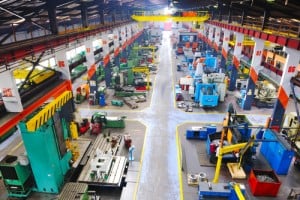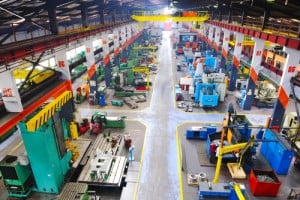Three New Ideas for Better Enterprise Integration
Most manufacturing companies have been working on the notion of enterprise integration for a good while now. They have been integrating control systems to MES systems and MES systems to ERP systems and so on and so on for years. And, they???ve been doing a pretty good job of it.
A lot of this integration has involved data and transactions ??? collecting data from the control systems and getting transactions like material consumption into the ERP systems. This has gone pretty well and many companies are well down the road with their efforts. But even with all this integration, they still feel like they???re missing something.
They???re finding that some things that should be simple ??? like changing the specs on a product or a test ??? aren???t quite so simple, even with all the integration. In some cases they have tons of data but still don???t know exactly what???s going on. And, some simple tasks in the plant, like QA tests and holding and releasing lots aren???t so simple because they involve too many systems ??? even if they???re integrated.
So, it???s time for companies to take a broader look at this notion of enterprise integration and look at opportunities to get beyond the basics of data and transaction integration. Here are three ideas that may help companies take a bigger-picture view of enterprise integration:
Master Data
Master data is the data that defines the things any system has to deal with. It could be materials, equipment, tests, products, recipes, formulas and so on. That means every system has to have some master data ??? and it???s duplicated across just about every system in the company. When someone wants to change the spec on a product or a test and it???s not nearly as easy as it should be, even with all the integration, then you have a master data problem. The solution is to look at ways to integrate the master data just like the data and the transactions have been integrated. When something like a spec or a recipe changes, it shouldn???t have to be changed in several different systems. When you???ve achieved true master data integration, you can change a spec once and all the systems that need the change will receive it. Now, that???s a whole new level of enterprise integration.
Data Context
Sometimes the problem is there???s just too much data, or it???s hard to figure it out. This happens all the time. Companies have the data ??? lots and lots of it ??? but they???re still not exactly sure what???s going on. What they???re missing is the data context. It might be great to have lots of pressure and temperature measurements from a batch cooker, but they???re only going to tell someone so much. A lot of other information is needed. What materials, from what vendors, were in the cooker? What maintenance had just been performed on the cooker? What cleaning had just been performed on the cooker? Who was running the cooker? Those are just the simple questions. The point is, it???s not enough to have all the data. You have to know everything else that was going on around the data at the same time to get the whole picture. Now that???s a whole new level of data integration.
Workflows
Sometimes simple tasks, like doing QA tests or holding or releasing products, can be way too complicated. It might be because there are too many systems in the equation ??? even if they???re all integrated. What???s missing is the workflow. The person doing the QA test or processing the hold or release is just doing a job; they???re not thinking in terms of a system or several systems. But, even in a highly automated and integrated environment, a simple job may involve two or three different systems, and that makes it more complicated than it should be. The idea is to focus on the workflow, not the systems. As it turns out, integrating the systems is actually easy; integrating the workflow is a lot harder. But, by integrating the workflow, the real advantages of the systems start to pay off. A company can go beyond just simple system integration to providing integrated workflows, with integrated systems behind them that really help people do their jobs. Now, that can really make a difference.
Companies have been doing enterprise integration pretty well for a while now, at least when it comes to data and transactions. But, it makes a lot of sense to take the value of enterprise integration to a new level. By looking at master data, data context and workflows, there should be plenty of opportunities to really make enterprise integration pay off ??? and pay off big.


